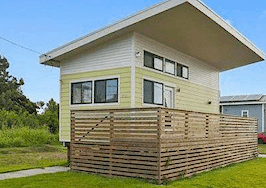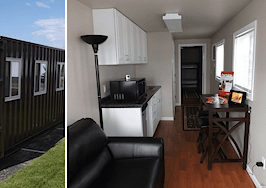As the Bay Area Rapid Transit (BART) prepares to update its aging cars next year, ideas for their upcycling have been bountiful.
The new trains are due to arrive beginning in summer 2020, which will see approximately 669 trains gradually replaced, according to Architecture Digest. The 1970s-era cars currently operating are already attracting attention from the city’s art scene, BART states.
“We’ve had interest from local museums to house the trains so that future generations will have a greater understanding of San Francisco’s public transportation system in the 20th and early 21st century,” vice president of the BART board Rebecca Saltzman said of the announcement.
“There have also been proposals to break down parts of the trains and incorporate them into art projects or into playgrounds. Some have even thought of using them for pop-up retail stores.”
However, with this being San Francisco, the cars are predictably being considered for an innovative new construction project.
The idea is to incorporate the cars into new buildings to reduce construction waste and reuse the cars — which BART is hoping would fetch up to $15,000 each. It would require much needed TLC such as wiring, plumbing, insulation and safety to become truly habitable, says University of Massachusetts political science professor Paul Musgrave, who tweeted a simple “No” regarding the news.
“The idea seems cool! Who doesn’t want to find a way to reduce waste and make new housing? But this is kind of a steak-flavored ice cream: two great things that work well separately but terribly together,” Musgrave explains.
He also notes that this strategy wouldn’t necessarily solve the problem of land-use in big cities such as San Francisco.
“The biggest obstacle to building new housing is regulatory, not technological. When community boards, city councils and zoning commissions literally will not permit multifamily dwelling to be built, it doesn’t matter if you want to build apartments out of concrete, wood or BART cars — you just can’t build them.”
So while the intentions are in the right place, aside from a design perspective, it may not be worth the trouble to convert these cars into apartment buildings.
“There’s a reason we all aren’t living in homes made of shipping containers — it’s costly to convert things made for one purpose to serve another purpose.”













